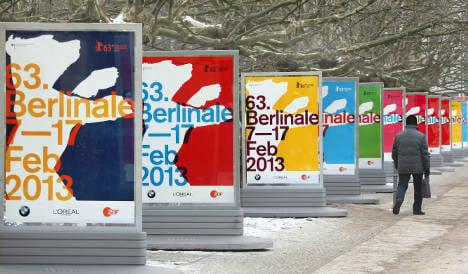The February 7- 17 Berlinale, the first major European film festival of the year, will showcase 24 pictures from 22 countries in the main programme, with a total of more than 400 films screened in its sprawling sidebar sections.
A jury led by Chinese director Wong Kar Wai will choose among 19 films in competition for the Golden and Silver Bear top prizes, to be awarded at a gala red-carpet ceremony February 16.
Oscar-winning actor Tim Robbins, New York-based Iranian film-maker Shirin Neshat, Greek producer Athina Rachel Tsangari, Danish Academy Award-winner Susanne Bier, German director Andreas Dresen and US camerawoman Ellen Kuras round out the panel.
Festival director Dieter Kosslick told reporters as he unveiled the full programme that the Berlinale was continuing its tradition, begun during the Cold War, of featuring politically-charged cinema from big names and upstarts.
“On the one hand we have major Hollywood films, but we have also brought in
filmmakers who are on their first or second picture,” he said. “Thematically throughout the programme you have a lot of women at the heart of the stories… and the collateral damage of the crisis on various societies.”
Star-gazers can expect Matt Damon, Jude Law, Juliette Binoche, Ethan Hawke, Julie Delpy, Nicolas Cage, Emma Stone, Geoffrey Rush, Catherine Deneuve, Isabelle Huppert, Christopher Lee and Zhang Ziyi, among others.
Damon teams up with US director Gus Van Sant for the first time since their 1997 Oscar winner Good Will Hunting in Promised Land, a film about US families facing the economic pinch who sell their land to companies extracting natural gas through fracking.
Steven Soderbergh, who has said he is heading into semi-retirement, reunites with Law from Contagion and Catherine Zeta-Jones from Traffic to present Side Effects, about the pharmaceuticals industry preying on stressed-out Americans.
Deneuve stars in the light-hearted French road movie On My Way, about a down-on-her-luck restaurant owner who sets out on a transformative trip.
Academy Award-winning Bosnian filmmaker Danis Tanovic (No Man’s Land) returns with An Episode in the Life of an Iron Picker, in which he turns a small hand-held digital camera on a Roma village locked in grinding poverty.
Kosslick said the sidebar sections would feature a number of new productions from European countries stricken by the eurozone debt crisis, including Greece, Spain and Portugal, and would look at its corrosive effects.
And British director Ken Loach will premiere a documentary about the economic hardship in post-war England that revived the socialist movement.
Last year the Golden Bear went to Italy’s veteran filmmakers Paolo and Vittorio Taviani for “Caesar Must Die”, a docu-drama about inmates at a high-security prison staging Shakespeare.
AFP/pmw



 Please whitelist us to continue reading.
Please whitelist us to continue reading.
Member comments